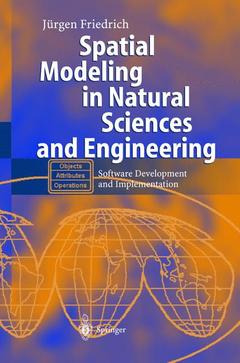Description
Spatial Modeling in Natural Sciences and Engineering, Softcover reprint of the original 1st ed. 2004
Software Development and Implementation
Author: Friedrich Jürgen
Language: English
Subjects for Spatial Modeling in Natural Sciences and Engineering:
Approximative price 105.49 €
In Print (Delivery period: 15 days).
Add to cartPublication date: 11-2012
305 p. · 15.5x23.5 cm · Paperback
Approximative price 105.49 €
Subject to availability at the publisher.
Add to cartPublication date: 02-2004
Support: Print on demand
Description
/li>Contents
/li>Comment
/li>
The author introduces the reader to the creation and implementation of space-related models by applying a learning-by-doing and problem-oriented approach. The required procedural skills are rarely taught at universities and many scientists and engineers struggle to transfer a model into a computer program. The purpose of this book is to fill this gap. It moves from simple to more complex applications, covering various important topics in the sequence: dynamic matrix processing, 2D and 3D graphics, databases, Java applets and parallel computing. A file (SMOP.zip) with all examples can be downloaded free of charge from the Internet at http://de.geocities.com/bsttc2/book.
Fills a market niche because the covered topics (building spatial models and software engineering) are rarely taught at universities but urgently needed by many engineers
Uses a practical step-by-step learning method with complete small, medium-sized and extendable applications
Takes a learning-by-doing and problem-oriented approach
Includes supplementary material: sn.pub/extras




